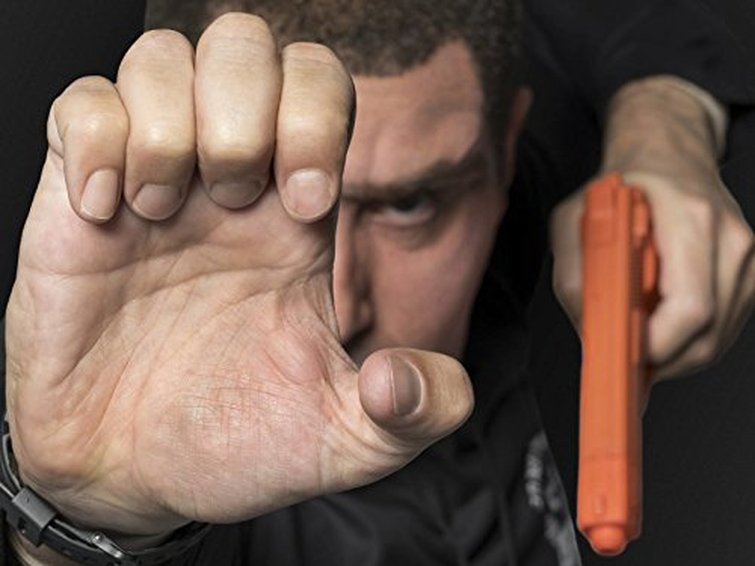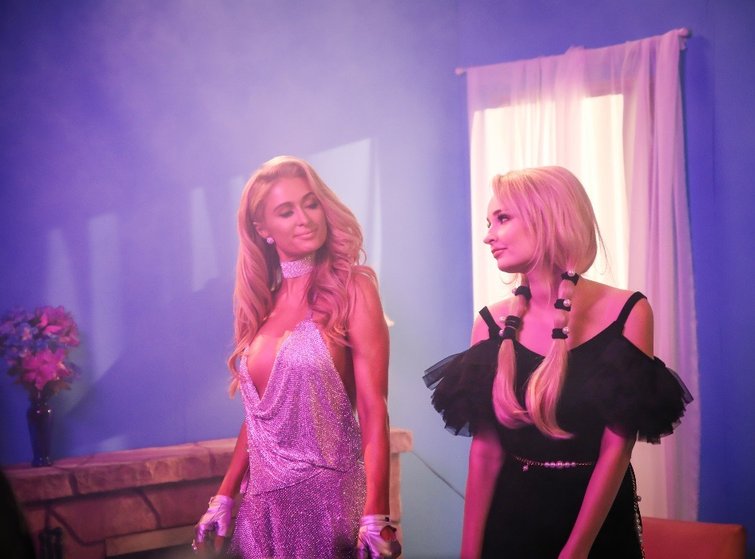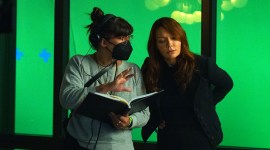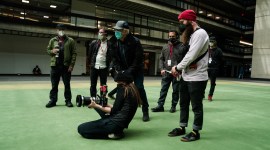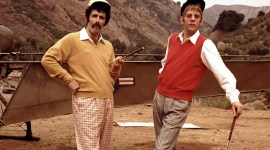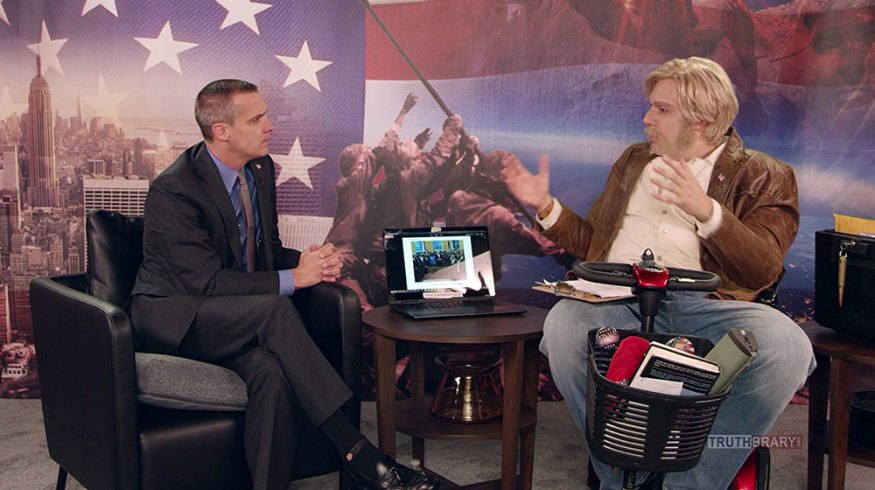
Industry Interview: Emmy-Nominated Editor Vera Drew
Emmy-nominated editor and filmmaker Vera Drew sat down with PremiumBeat for a look into her work on “Who is America?” and more.
PremiumBeat: Vera, you’ve had a diverse career. How did you get into filmmaking and, more specifically, editing?
Vera Drew: I’ve wanted to direct and write movies and TV since the first time I saw Back to the Future, when I was six. My first big industry job was on a Roman Coppola movie. I was initially hired as a PA, but one day Roman decided to have me help him put together animatics, based off of his shot list. He liked my work so much that he decided to bring me onto the project as a line editor. It was very exciting because I was literally editing on set. I really got to see how material changes from the page to the screen, and that once it comes to post-production, it’s kind of your last chance to rewrite the script. I saw editing as a way of getting more experience in learning how to tell stories visually, and that would make me an even better writer and director someday. I can now confidently say that my skill as an editor really informs my directing style and has made me an excellent storyteller.
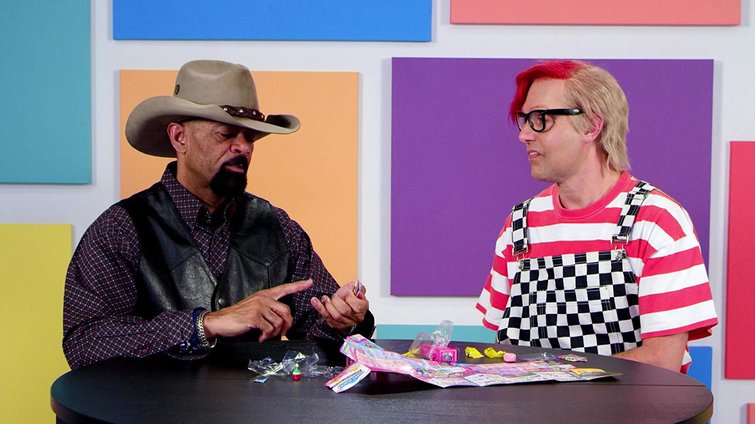
Who is America? (Four By Two Television).
PB: You’ve recently been nominated for an Emmy for your work on Sacha Baron Cohen’s Who Is America? How does it feel to be recognized by your peers?
VD: It feels amazing! I have definitely given my share of imaginary acceptance speeches over the years, but having come from an indie film/late-night/alt-comedy world, I truly never could have imagined being nominated for an Emmy.
PB: How did you get involved with Who is America?, and what was your experience working on the show?
VD: I was initially brought onto Who Is America? by the show’s director Dan Longino. We both came from the Tim and Eric world (Tim Heidecker and Eric Wareheim of Abso Lutely Productions) and had worked together on a Netflix comedy special for Joe Mande, so we just really click as collaborators. Editing on Who Is America? was a dream that I never even knew I had. Sacha Baron Cohen had been a hero of mine since I was in high school, so I could never even fathom that I would have the opportunity to work with him someday. Brüno was one of the first LGBTQ+ characters on TV that genuinely made me laugh. Growing up as a closeted trans kid, in the Midwest in the ’90s, was not ideal. It was so important for me to see an adult comedian call out the queer-phobic policies of the Clinton and Bush administrations. And now, with how scary, chaotic, and absurd the political landscape has become in this country, it was cathartic to be able to work on a show with a strong point of view, that had no qualms about exposing hypocrisy. I was able to find a constructive use for my frustration and genuine fear for this country.
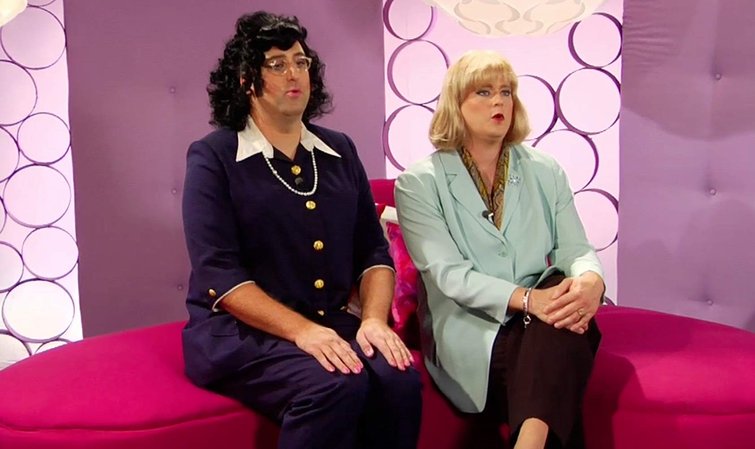
Tim and Eric Awesome Show, Great Job! Cartoon Network).
PB: You helped launch the Adult Swim streaming network Channel 5. Can you tell us a bit about that?
VD: It was an absolute blast putting together Tim and Eric’s new online TV network, Channel 5! In addition to coming up with the overall aesthetic for the network and putting together over 100 original bumpers and interstitials, I wrote, directed, and executive-produced four original web series, including I Love David, a doc-series starring public access legend David Liebe Hart; Tim and Eric Qu?z Game,, a dystopian sci-fi game show; a nightmare-fueled anthology/found footage series called Scum; and a show called Our Bodies — which was basically just an excuse to have Tim and Eric talk to a real medical doctor about erections and diarrhea. I really love working with Tim and Eric. The shows I make with them have so much room for experimenting, and they see editors as creatives, rather than technical button pushers.
PB: What is your editing process like? How much time do you get to work on each show/episode?
VD: When editing reality-based comedy, the goal is to make damn sure the audience knows that what you are seeing on screen is 100 percent actually happening and isn’t being carefully manipulated to make someone look like they are saying or doing something that they didn’t. So, a lot of times, this is knowing when to not edit — when to live in a wide shot or let a moment breathe. Editors like me are really just writer/directors using editing software. With reality-based comedy, so much of the writing and directing happens in the edit bay because the process is about stringing together narrative threads from interactions between fictional characters and real people. The perfect example is with I Love David. The host, David Liebe Hart, is a relatively raw and unpolished performer who we unleash into the real world. A lot of the shooting was grabbing ingredients we needed for post — a line about his time in the Navy here or a shot of him wolfing down German sausage there — it’s in the edit where all of that content is pieced together and the show is essentially “written.”
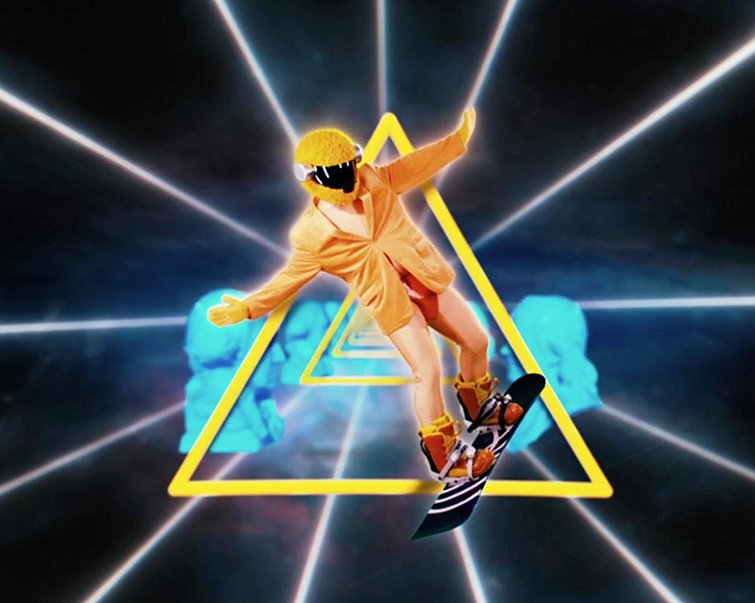
KRFT PUNK’S Political Party (Abso Lutely Productions).
PB: How much creative freedom do you get when cutting the episodes? Is it pretty clearly lined out, or do you get to experiment and see what works?
VD: It really depends on the show! For KRFT PUNK’S Political Party, they shot three panels and a few days worth of documentary footage in DC. I spent a week or two in the edit bay on my own, putting together my editor’s cut. After that, I worked with director Eric Notarnicola and showrunner Dan Curry for a few weeks to make adjustments, incorporate their vision, and get it down to time. The show had a rough outline as a script, but it was based entirely around real life interactions, so a lot of the “writing” and structural story work happened in that initial editor’s cut, which is why I ended up receiving a writing credit, when all was said and done.
PB: What programs or software do you use for editing?
VD: I strongly prefer to use Adobe Premiere. My editing often includes a lot of VFX and motion graphics work that requires After Effects, so it makes sense for me to always work inside Adobe-world. Premiere is also intuitively designed in a way that makes sense for my type of creative brain.
PB: What are the challenges that come with editing comedy vs. drama — or any other genre?
VD: I love having the chance to work on something that makes people laugh, but I never really thought of myself as working specifically in comedy. The shows I enjoy working on bend genres effortlessly. When I first approach an edit, generally speaking, I am trying to capture the drama between the characters within the reality of the scene. The humor only really shines if the audience cares about the characters. Also, a lot of the shows I have worked on, whether it’s Who Is America? or Scum, directly confront horror, both real and imagined. In the latter case, I made a wildly terrifying “found footage” anthology. And in the case of the former, we took a hard look at our current political system.
PB: Is there someone you’d love to work with?
VD: It would be my dream to work with bad-ass, talented trans-women like the Wachowskis, Janet Mock, or Our Lady J. I feel they also represent the spectrum of stories I want to tell — from sci-fi high strangeness to beautiful emotional stories that embolden queer visibility. In general, I really want to work with other creatives that identify as queer or trans. I would love to direct a music video for trans artists like Kim Petras, Sophie, or Black Dresses. I am also really inspired by the work of Natalie Wynn (a.k.a. ContraPoints on YouTube) and I always felt like our aesthetics would pair really well together.
PB: You recently came out as transgender. Does this affect the kinds of projects you work on or the kind of stories you want to tell?
VD: Since coming out, my place in the industry has changed in some ways, and in many ways, it hasn’t. I am very fortunate that I was already established in the industry prior to coming out, and fortunately, most of the people I have worked with and enjoy working with are LGBTQ+ allies. It’s an exciting time to be working in television because, while TV has become a lot better at trans representation with shows like Pose, there’s still a long way to go. It’s exciting because I feel like I am on the ground floor of what will hopefully be a time in Hollywood where we start seeing more trans stories that aren’t specifically about the transition. So much of our media representation is only about the before-and-after of it all. I’m not only interested in telling LGBTQ+ stories, I feel that that is the next chapter of my career. I want to continue playing in the genres I like to play in — horror, sci-fi, dark comedy — and using the tools I’ve collected as a writer/director/editor over the years. But I also want to make a conscious shift toward showing interesting and multi-dimensional representations of my queer sisters, brothers, and gender non-conforming siblings. My dream is to make a body horror film about gender dysphoria.
PB: Do you have any advice for editors or filmmakers, in general, trying to break into the industry?
VD: I think patience has been the biggest lesson for me since I began working in the industry. In America, we are so focused on the idea of young excellence, to the point where I thought I was going to be a Mozart, overnight success story in my early twenties. The truth is, finding your footing in this industry takes time — you have to meet the right people, make mistakes, and find your voice. You need to have a healthy mix of ambition to reach your goals and the calmness of knowing you are right where you need to be, at any given moment.
Keep up with Vera’s latest projects by following her on Twitter at @VeraDrew22, and check out her website.
Looking for more industry interviews? Check these out.
- Gotham Chopra on Following Stephen Curry for Facebook Watch
- Industry Insights: Production Designer John Paino Tells Big Little Lies
- Industry Insights: Hulu’s Das Boot Composer Matthias Weber
- Industry Insights: Cinematographer Adrian Peng Correia
- Industry Insights: The Horror Scores of The Newton Brothers


